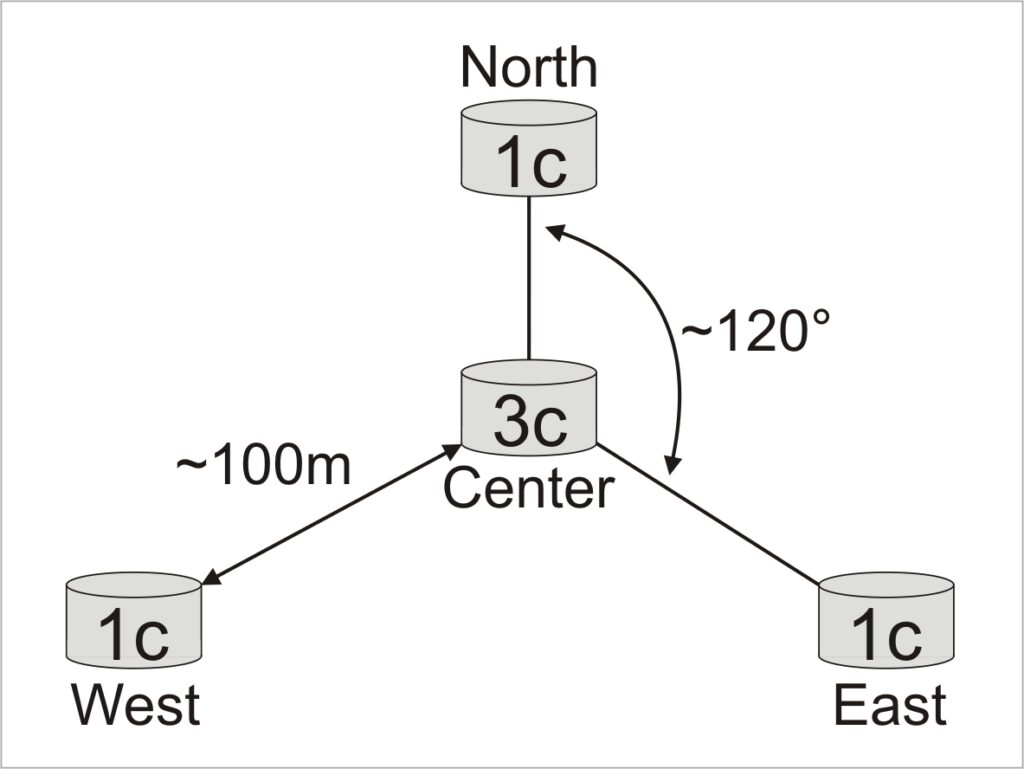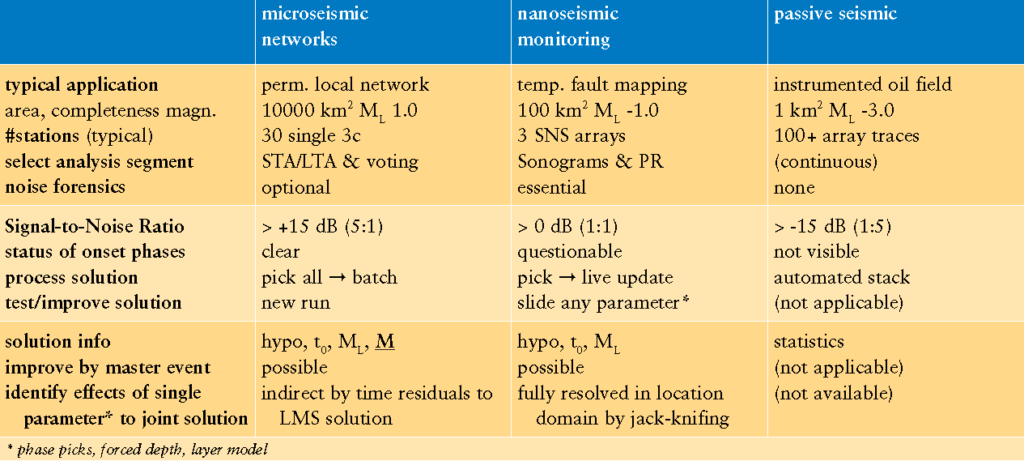We introduce the concept of Nanoseismic Monitoring aimed at determining the sources of seismic energy radiation in (slant) distances of 10 m to 10 km, and magnitude ranges down to ML –3.0. Recording seismometers are arranged as tripartite array of 100 m layout around the three-comp center site, forming a six-channel Seismic Navigating System (SNS).

The concept was originally developed to improve the aftershock recording capabilities of OSI missions governed by the CTBT regulations for monitoring nuclear underground explosions. However, the first practical application consisted in monitoring impact events generated by collapse of sinkholes at the Dead Sea.
The associated evaluation program, HypoLine, utilizes network and array processing tools, spectral and polarization analysis, and displays uncertainty ranges by jackknifing instead of residuals. Waveform parameters can be picked close to 0 dB SNR; initial ambiguities are resolved by constraints on slowness and azimuth. Event processing is highly interactive; it allows for determination of origin time, epicenter, depth, suited half space vp and vs, and ML by just one SNS.
